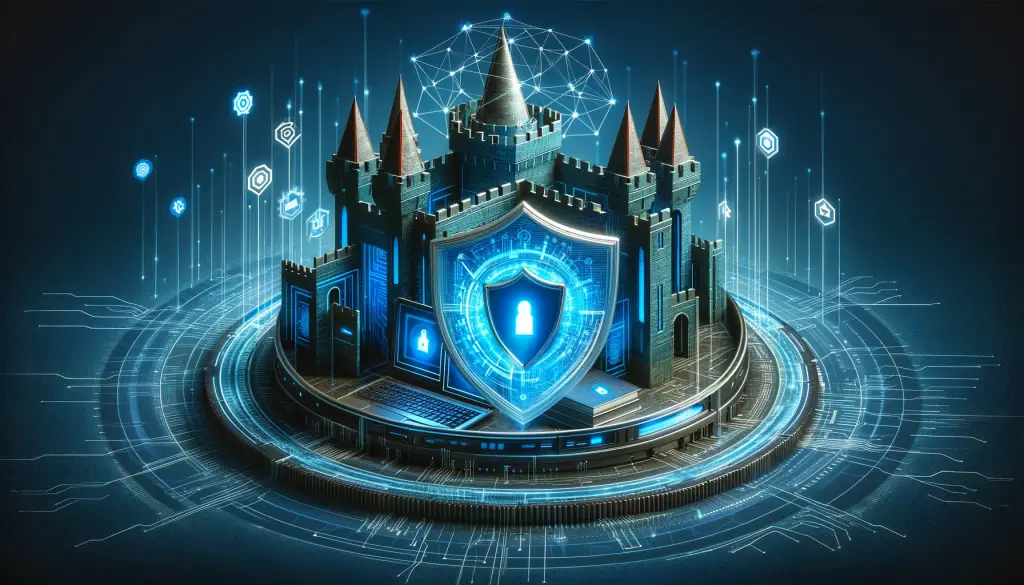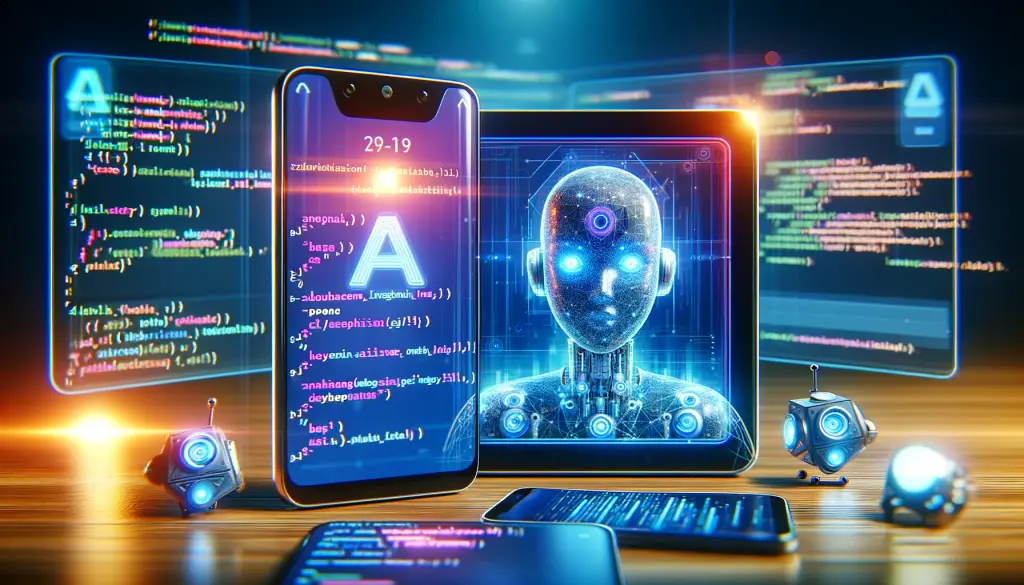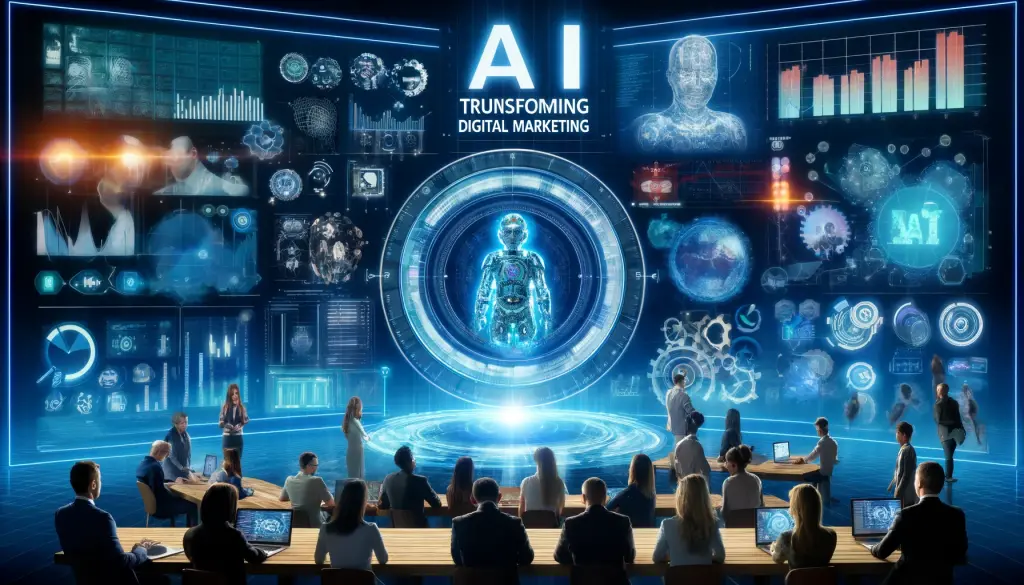The digital landscape is undergoing a profound transformation, driven by the rapid advancement and integration of Artificial Intelligence (AI) and the Internet of Things (IoT). These technologies are not only reshaping the way we interact with the digital world but also redefining the paradigms of connectivity, automation, and data exchange. As AI and IoT become increasingly embedded in our daily lives, from smart homes and autonomous vehicles to intelligent business processes, they bring forth a new era of convenience and efficiency.
However, this technological evolution also introduces significant cybersecurity challenges and threats. The proliferation of connected devices and the complexity of AI systems expand the attack surface for cybercriminals, providing new avenues for sophisticated cyber-attacks. AI, with its ability to learn and adapt, can be exploited to create malware that evolves, bypassing traditional security measures. Meanwhile, IoT devices, often built with limited security features, become prime targets for attackers looking to infiltrate networks and access sensitive data.
The integration of AI and IoT not only exacerbates the volume and sophistication of cyber threats but also complicates the task of securing digital assets and infrastructures. Cybersecurity strategies must now contend with the dynamic and constantly evolving threat landscape, where the stakes are elevated by the potential for AI-driven attacks and the vulnerabilities inherent in a vast and interconnected IoT ecosystem.
As we delve deeper into the age of AI and IoT, understanding and addressing these new cybersecurity challenges becomes paramount. This not only involves safeguarding against sophisticated threats but also entails a holistic approach to digital security, encompassing the protection of data, devices, and networks in an increasingly interconnected world.
The Impact of AI and IoT on Cybersecurity
The advent of Artificial Intelligence (AI) and the Internet of Things (IoT) is significantly influencing the domain of cybersecurity, changing the dynamics of threat detection and response, and reshaping concerns around network security and data privacy.
How AI is Changing the Game in Cyber Threat Detection and Response
- Enhanced Detection Capabilities:
- AI enhances the ability to detect anomalies and potential threats in real time by analyzing vast quantities of data and identifying patterns that may indicate a security breach. This rapid analysis far exceeds human capabilities, leading to earlier and more accurate threat detection.
- Predictive Security Measures:
- Machine learning algorithms in AI can predict potential threats and vulnerabilities by learning from past incidents and current trends. This predictive capability allows organizations to proactively fortify their defenses before threats materialize.
- Automated Response:
- AI enables automated response mechanisms that can instantly react to identified threats, isolating affected systems and mitigating damage without human intervention. This swift response is crucial in minimizing the impact of cyber-attacks.
- Adaptive Threat Intelligence:
- AI systems evolve and adapt over time, continuously improving their threat detection and response capabilities. This learning process ensures that cybersecurity measures remain effective against the ever-changing landscape of cyber threats.
The Expansion of IoT and Its Implications for Network Security and Data Privacy
- Increased Attack Surface:
- The proliferation of IoT devices, many of which are inherently insecure, significantly expands the attack surface for cybercriminals. Each device connected to a network represents a potential entry point for attackers.
- Complexity in Network Security:
- The diverse nature and vast quantity of IoT devices introduce complexity in managing network security. Ensuring consistent security policies and practices across a myriad of devices is a challenging task for cybersecurity professionals.
- Data Privacy Concerns:
- IoT devices often collect sensitive personal and business data. The vast amounts of data generated and transmitted by these devices pose significant privacy challenges, necessitating stringent data protection measures.
- Vulnerability to Sophisticated Attacks:
- IoT ecosystems, with their interconnected devices and systems, are vulnerable to sophisticated attacks like DDoS (Distributed Denial of Service), where multiple devices are compromised to launch large-scale attacks.
The integration of AI and IoT technologies has undoubtedly fortified cybersecurity efforts through enhanced detection, predictive analytics, and automated responses. However, it has also introduced new vulnerabilities and challenges, particularly in managing the expanded attack surface and ensuring data privacy in the IoT domain. Navigating these complexities requires a nuanced understanding of both the potential and the risks of AI and IoT in cybersecurity.
Emerging Threats in the AI and IoT Era
The integration of Artificial Intelligence (AI) and the Internet of Things (IoT) into our digital ecosystem has not only paved the way for innovative advancements but also introduced new and sophisticated cyber threats. These emerging threats leverage the capabilities of AI and exploit vulnerabilities in IoT devices, posing significant risks to both personal and corporate environments.
Sophisticated Cyber-attacks Leveraging AI Algorithms
- AI-Powered Malware and Attacks:
- Cybercriminals are using AI to create more intelligent and adaptable malware that can learn from the environment and evade detection. These AI-powered threats can autonomously modify their code and behavior to bypass security measures.
- Automated Social Engineering:
- AI can be used to automate and enhance social engineering attacks, such as phishing. By analyzing vast amounts of data, AI algorithms can generate highly convincing fake messages and emails tailored to individual targets, increasing the likelihood of successful breaches.
- Deepfakes and Disinformation:
- AI technologies like deep learning are being used to create deepfakes—highly realistic and convincing fake audio and video content. This can lead to misinformation, reputational damage, and security risks through impersonation and fraud.
Vulnerabilities in IoT Devices
- Insecure Endpoints:
- Many IoT devices have inadequate security protections and are often deployed with default settings and weak credentials, making them easy targets for hackers. Once compromised, these devices can be used as entry points to broader networks.
- Lack of Regular Updates:
- IoT devices frequently suffer from a lack of firmware updates and patches, leaving known vulnerabilities unaddressed. This makes them persistent weak spots in network security.
- Data Interception and Privacy Breaches:
- The transmission of data between IoT devices and servers often lacks sufficient encryption, making it susceptible to interception and eavesdropping, leading to data theft and privacy violations.
- Network Propagation:
- Once an IoT device is compromised, attackers can use it to move laterally within a network, escalating the attack to gain access to more sensitive systems and data.
As we continue to embrace the conveniences and benefits of AI and IoT technologies, it’s crucial to remain vigilant about the sophisticated threats they bring. Cybersecurity strategies must evolve to address these complex challenges, prioritizing the development of robust security frameworks, continuous monitoring, and proactive defense mechanisms to safeguard against the advanced and ever-changing threat landscape in the AI and IoT era.
AI-Driven Cybersecurity Solutions
As the digital landscape becomes more complex and the nature of cyber threats more sophisticated, AI-driven cybersecurity solutions are becoming essential for effective defense. Advances in AI-powered threat intelligence, real-time monitoring, and automated incident response are at the forefront of combating these evolving threats.
Advances in AI-Powered Threat Intelligence and Real-Time Monitoring
- Enhanced Threat Intelligence:
- AI algorithms can analyze vast datasets from various sources to identify emerging threats and vulnerabilities. This AI-powered threat intelligence provides insights into attacker tactics, techniques, and procedures (TTPs), helping organizations stay ahead of potential threats.
- Real-Time Monitoring and Anomaly Detection:
- AI systems can monitor network traffic and user behavior in real-time, identifying anomalies that may indicate a cybersecurity threat. Machine learning models, trained on historical data, can detect even subtle deviations from normal behavior, flagging potential security incidents for immediate investigation.
- Contextual Analysis and Decision Support:
- AI can contextualize security alerts, correlating data from different sources to assess the severity and potential impact of a threat. This helps security analysts prioritize responses and make informed decisions quickly.
Automated Incident Response and Predictive Threat Analysis
- Automated Incident Response:
- AI-driven security platforms can automate the initial response to detected threats, executing predefined actions such as isolating affected systems, blocking malicious IP addresses, or revoking compromised credentials. This rapid response can significantly mitigate the damage of cyber attacks.
- Machine Learning in Predicting Future Threats:
- Machine learning models are adept at learning from past incidents to predict and identify potential future threats. By understanding the patterns and behaviors associated with cyber attacks, these models can forecast likely future threats, enabling proactive defense measures.
- Self-Adapting Security Systems:
- AI systems can adapt and evolve their defensive strategies based on learned experiences and changing environments. This continuous learning process ensures that cybersecurity defenses become more robust and effective over time.
- Security Automation and Orchestration:
- AI integrates with security automation and orchestration platforms, streamlining the response to incidents by coordinating various security tools and processes. This orchestration enhances the efficiency and effectiveness of the cybersecurity operations center (SOC).
AI-driven cybersecurity solutions represent a significant leap forward in the ability to protect digital assets and data. By leveraging the power of AI for enhanced threat intelligence, real-time monitoring, automated incident response, and predictive analytics, organizations can establish a more proactive and resilient cybersecurity posture, capable of countering the advanced threats of the modern digital age.
Securing IoT Devices and Networks
With the proliferation of the Internet of Things (IoT) devices, securing these devices and their networks has become paramount to protect against cyber threats and ensure data privacy. Here are some best practices for IoT device security, including regular updates and patch management, and implementing robust network security measures.
Best Practices for IoT Device Security
- Regular Updates and Patch Management:
- Firmware Updates: Ensure that IoT devices are regularly updated with the latest firmware to fix known vulnerabilities and improve security features. Automatic update features can help maintain the latest security standards without manual intervention.
- Patch Management: Develop a systematic process for tracking, testing, and applying security patches to IoT devices promptly to mitigate potential risks.
- Secure Configuration:
- Default Settings: Change default usernames and passwords to strong, unique credentials as many IoT devices come with weak default settings that can be easily exploited.
- Disable Unnecessary Services: Turn off any services or features that are not needed, as these can provide additional attack vectors if left open.
- Encryption and Secure Communications:
- Implement strong encryption standards for data at rest and in transit to prevent unauthorized access and ensure that even if data is intercepted, it cannot be easily deciphered.
Implementing Robust Network Security Measures
- Network Segmentation:
- Separate IoT devices onto their own network segment, isolated from critical business networks. This limits the spread of potential attacks and reduces the risk to essential systems and data.
- Access Control:
- Implement strict access controls to manage who and what can communicate with IoT devices. Use techniques like whitelisting and least privilege access to minimize exposure to unauthorized entities.
- Firewalls and Intrusion Detection Systems (IDS):
- Use firewalls to control incoming and outgoing network traffic to and from IoT devices, and employ IDS to monitor and detect suspicious activities on the network.
- Regular Security Assessments:
- Conduct regular security audits and vulnerability assessments of the IoT ecosystem to identify and rectify security gaps. This includes penetration testing and the use of vulnerability scanners tailored for IoT environments.
- Security Awareness and Training:
- Educate and train staff on IoT security best practices and potential risks. Awareness can significantly reduce the likelihood of security breaches due to human error.
By adhering to these best practices, organizations can significantly enhance the security of their IoT devices and networks, reducing the risk of unauthorized access, data breaches, and other cyber threats. In an era where IoT devices are increasingly integrated into daily operations, establishing a robust security framework is essential to safeguard digital assets and maintain trust in IoT systems.
Case Studies: AI and IoT in Action Against Cyber Threats
The integration of Artificial Intelligence (AI) and the Internet of Things (IoT) into cybersecurity strategies has been transformative for many organizations. Here are some real-world examples illustrating how businesses have successfully leveraged AI and IoT to enhance their cybersecurity posture and combat threats.
Case Study 1: Healthcare Organization Utilizing AI for Threat Detection
- Context: A leading healthcare organization implemented AI-driven security solutions to protect sensitive patient data and medical records from cyber threats.
- Implementation: The organization employed AI algorithms to monitor network traffic and detect anomalies indicative of potential cybersecurity incidents, such as unauthorized access or data exfiltration attempts.
- Outcome: The AI system successfully identified and thwarted several sophisticated cyber-attacks, minimizing the risk of data breaches and ensuring the continuity of healthcare services. The proactive threat detection capabilities of AI allowed the organization to respond to incidents swiftly and efficiently.
Case Study 2: Retail Company Enhancing IoT Security
- Context: A global retail company, with numerous IoT devices deployed across its stores for inventory management and customer service, faced challenges in securing these devices against cyber threats.
- Implementation: The company implemented a comprehensive IoT security framework, including regular software updates, network segmentation, and real-time monitoring using AI-based security tools.
- Outcome: The strengthened security measures significantly reduced the vulnerability of IoT devices to cyber-attacks, protecting critical business data and improving overall security posture. The integration of AI for monitoring and response ensured that potential threats were identified and addressed promptly.
Case Study 3: Financial Services Firm Combating Fraud with AI and IoT
- Context: A financial services firm integrated AI and IoT technologies to detect and prevent fraudulent activities in real-time, safeguarding client transactions and financial data.
- Implementation: Utilizing AI algorithms, the firm analyzed transaction patterns and client behaviors across its IoT-enabled devices to identify signs of fraudulent activities. The system was designed to automatically flag suspicious transactions and initiate protective protocols.
- Outcome: The AI and IoT-driven approach led to a significant reduction in fraud incidents, enhancing the security of financial transactions and boosting customer trust in the firm’s digital services.
These case studies demonstrate the effective application of AI and IoT technologies in bolstering cybersecurity defenses across various industries. By adopting these technologies, organizations have not only improved their ability to detect and respond to cyber threats but also enhanced the overall security and resilience of their digital environments.
Challenges in Integrating AI and IoT with Cybersecurity
While the integration of Artificial Intelligence (AI) and the Internet of Things (IoT) offers significant advantages for enhancing cybersecurity, it also presents a range of technical, ethical, and logistical challenges. These hurdles must be navigated carefully to harness the full potential of these technologies effectively.
Technical Challenges
- Complexity of Integration:
- Integrating AI and IoT with existing cybersecurity infrastructure can be complex, requiring advanced technical knowledge and significant modifications to accommodate the new technologies.
- Scalability and Performance:
- Ensuring that AI and IoT solutions can scale effectively to handle large volumes of data and maintain high performance under the strain of continuous monitoring and analysis is a significant technical challenge.
- Interoperability Issues:
- AI and IoT devices from different manufacturers may have compatibility issues, hindering seamless integration and efficient operation within the cybersecurity ecosystem.
Ethical Challenges
- Privacy Concerns:
- The extensive data collection required for AI and IoT to function effectively raises concerns about user privacy and data protection, necessitating stringent measures to safeguard personal and sensitive information.
- Bias and Discrimination:
- AI systems can inadvertently learn and perpetuate biases present in their training data, leading to discriminatory practices in cybersecurity measures, such as unfair profiling or targeting.
Logistical Challenges
- Resource Allocation:
- Implementing AI and IoT solutions often requires substantial investment in terms of finance, time, and personnel, posing logistical challenges, especially for organizations with limited resources.
- Continuous Learning and Adaptation:
- Keeping up with the rapid evolution of AI and IoT technologies demands ongoing training and adaptation, which can be logistically challenging for cybersecurity teams to manage alongside their regular duties.
The Evolving Cyber Threat Landscape
- Keeping Pace with Advanced Threats: The dynamic nature of cyber threats, especially with the advent of AI and IoT, means that cybersecurity defenses must continuously evolve to counter new and sophisticated attack vectors.
- Proactive Defense Mechanisms: The integration of AI and IoT requires a shift from reactive to proactive cybersecurity strategies, where potential threats are anticipated and mitigated before they can cause harm.
- Ethical Use of AI in Cybersecurity: Balancing the aggressive capabilities of AI in cybersecurity with ethical considerations is crucial to avoid overreach and ensure that protective measures do not infringe on individual rights or privacy.
Addressing these challenges requires a multifaceted approach, combining advanced technical solutions with strong ethical standards and strategic planning. By acknowledging and tackling these hurdles head-on, organizations can effectively integrate AI and IoT into their cybersecurity frameworks, enhancing their defense capabilities against the increasingly sophisticated landscape of cyber threats.
The Future of Cybersecurity in the AI and IoT Landscape
As we delve into the future, the interplay between Artificial Intelligence (AI) and the Internet of Things (IoT) is poised to have a profound impact on the field of cybersecurity. Here are some predictions on how these technologies will shape the future of cybersecurity and the importance of maintaining a culture of continuous innovation and vigilance.
Predictions for How AI and IoT Will Shape Cybersecurity
- Advanced Predictive Capabilities:
- AI will enhance the predictive capabilities of cybersecurity systems, allowing for more accurate forecasting of potential threats and vulnerabilities. This will enable organizations to preemptively strengthen their defenses against anticipated attacks.
- Automated Security Protocols:
- The integration of AI in cybersecurity will lead to more automated and self-healing security protocols, where systems can detect, diagnose, and remediate threats without human intervention, increasing the speed and efficiency of response to cyber incidents.
- Increased IoT Device Security:
- As the vulnerabilities of IoT devices become more apparent, there will be a significant push towards developing stronger security standards and technologies for these devices, ensuring they are less susceptible to attacks and can be securely integrated into broader network infrastructures.
- Decentralized Security Frameworks:
- Blockchain and other decentralized technologies may be increasingly adopted to secure IoT networks and transactions, providing transparent and tamper-proof systems that enhance trust and integrity in digital interactions.
- Ethical AI in Cybersecurity:
- Ethical considerations will take center stage in the development and deployment of AI in cybersecurity, focusing on ensuring privacy, fairness, and transparency, and preventing the misuse of AI technologies.
The Importance of Continuous Innovation and Vigilance
- Evolving Threat Landscape: As cyber threats continue to evolve in complexity and sophistication, particularly with the use of AI by cybercriminals, continuous innovation in cybersecurity technologies and strategies will be critical to staying ahead of potential risks.
- Importance of Talent and Training: Investing in skilled cybersecurity professionals and ongoing training will be paramount to effectively leveraging AI and IoT technologies in combating emerging cyber threats.
- Proactive and Preemptive Security Measures: The future of cybersecurity will increasingly rely on proactive and preemptive measures, where potential threats are identified and neutralized before they can impact the organization.
- Collaborative Security Efforts: Collaborative efforts between industries, academia, and government will be essential in developing advanced cybersecurity solutions and creating a resilient global cyber defense infrastructure.
The future of cybersecurity in the AI and IoT landscape is both promising and challenging. While these technologies offer powerful tools for enhancing security, they also present new vulnerabilities and ethical considerations that must be carefully managed. The key to success in this future landscape will be continuous innovation, vigilance, and collaboration, ensuring that cybersecurity defenses remain robust, responsive, and responsible in the face of evolving digital threats.
Conclusion
In conclusion, the integration of Artificial Intelligence (AI) and the Internet of Things (IoT) into the cybersecurity landscape represents a significant shift towards more dynamic, predictive, and autonomous security mechanisms. As these technologies continue to evolve and permeate various sectors, they bring with them the promise of enhanced cybersecurity capabilities, enabling organizations to better protect against and respond to increasingly sophisticated cyber threats.
The journey ahead in cybersecurity is one of constant adaptation and vigilance. The integration of AI and IoT offers profound opportunities for innovation in threat detection, analysis, and response. However, it also requires careful consideration of the ethical implications, data privacy concerns, and the potential for new vulnerabilities. The balance between leveraging advanced technological capabilities and maintaining trust, privacy, and security will be pivotal.
As we look to the future, it’s clear that continuous innovation in cybersecurity practices, coupled with a proactive approach to threat management and ethical technology use, will be essential. Organizations must stay ahead of the curve by investing in advanced AI and IoT solutions, fostering a culture of continuous learning, and collaborating across sectors to build a resilient cybersecurity infrastructure.
The future of cybersecurity in the AI and IoT era is not without its challenges, but with the right strategies, tools, and mindset, businesses and individuals can navigate this complex landscape with confidence, ensuring a secure digital environment for everyone.





